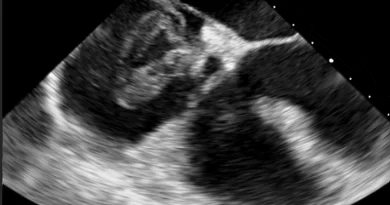Incidental Pulmonary Embolism
Increased imaging made finding incidental pulmonary embolism more common. According to some data, hundreds of thousands of unexpected PE are picked up by imaging in the United States every year. Two questions arise from this trend. The first, is whether we need to treat these unexpected clots. And the second is whether the long-term consequences of incidental clots are different than those of clots that cause symptoms.
Incidental Pulmonary Embolism in Cancer Patients
Probably the most common scenario to find a pulmonary embolism that we did not suspect is in cancer patients. Often, these patients undergo imaging for the purpose of staging or surveillance. As cancer associated thrombosis is common, finding an unexpected clot is also not rare.
Multiple studies examined cancer patient outcomes after an incidental pulmonary embolism. Overall, it seems that outcomes are quite similar to those of patients with symptomatic clots.
Still, one study is worth mention. Here, Peris and colleagues used data from the RIETE registry. She identified 715 cancer patients who were diagnosed with a pulmonary embolism incidentally. Then, she was able to analyze follow-up over a period of anticoagulation and after anticoagulation was stopped. She showed that while recurrent PE were common once anticoagulation stopped, mortality was uncommon. On the other hand, bleeding on anticoagulation was common. The authors concluded that in cancer patients decisions about long-term anticoagulation after an incidental pulmonary embolism are not straightforward.
Incidental Pulmonary Embolism without Cancer
Data on incidental PE in non-cancer patients are scarce. But for some reason two publications came out in sequence in 2023. Lee and colleagues performed a comparison of outcomes of patients with incidental versus symptomatic pulmonary embolism in a single institution. Their study was retrospective. The population, in my opinion, was quite narrow. It included Asian patients (Korean) who received CT scans “semi-routinely” after trauma or surgery. It seems like this was the routine in this institution. Despite lack of symptoms or signs, approximately 29% of patients had a PE. After a multivariable analysis, incidental pulmonary embolism was associated with fewer adverse outcomes compared to symptomatic PE. On the other hand, venous thromboembolism recurrence risk was similar between both groups.
In another study Wysokinska and colleagues compared incidental to symptomatic pulmonary embolism in both cancer and non-cancer patients. They used a prospective dataset accumulated over 7 years in the Mayo Clinic. The bottom line of their findings was that incidental pulmonary embolism was common and that it was a serious condition, similar to symptomatic PE. They have also shown that important outcomes such as mortality and bleeding were often associated more with underlying medical conditions than with the clot itself. A surprising finding was the mortality was higher in non-cancer patients with incidental PE compared to symptomatic PE. They could not explain this finding which is in contrast to limited previous data.
Suggested Clinical Approach
So, how should these data guide us regarding treatment?
First, we need to determine whether a pulmonary embolism is indeed acute, or perhaps it is chronic. This is because if it is chronic, we may not need to treat it (or at least, the answer will not be so obvious). Practically, there are two ways to achieve this goal. The first, is to look for old images. If these are available, we might be able to find evidence of old clots. Then, we may decide not to initiate treatment with anticoagulation. The second tool at our disposal is d-dimer. If the d-dimer is low, that points against an acute thrombosis. Of course, if it is elevated, it may signify an acute clot, or the elevation may be for another reason altogether.
Once we have determined that the clot is acute, or subacute, usually we will offer treatment. As per most recommendations, treatment will be for at least 3 months. But then we will need to decide if we should extend treatment or not. Here, again, some sleuthing can be useful. Basically, we need to identify clot recurrence risk off treatment. Thus, if we can identify a transient risk factor and align it with the appearance of the clot, we might get away with shorter treatment duration. But if we cannot identify such a factor or if the patient has active cancer, then we will often opt for long-term treatment, as long as bleeding risk is acceptable.
Many of these decisions are not straightforward. Clinical judgement often plays a role. Sometimes, though less often than one would imagine, thrombophilia testing can come in handy.
Guidelines on Incidental Pulmonary Embolism
Available guidelines echo the approach I outlined above. For instance, the International Society for Thrombosis and Hemostasis published their guidance on diagnosis and treatment of incidental pulmonary embolism. These guidelines also expand on deep vein thrombosis and on splanchnic vein thrombosis. Basically, they recommend to confirm the diagnosis and to treat unless the clot it obviously chronic. They also offer specific guidance regarding isolated subsegmental pulmonary embolism and about calf vein thrombosis. Basically, if these are isolated, treatment is not always necessary. It is noteworthy that the ISTH guidelines are a bit outdated. For instance, they recommend low-molecular weight heparin. But in modern practice oral Xa inhibitors are often appropriate for cancer related thrombosis.
The American Society for Clinical Oncology recommend to treat incidental proximal PE and DVT in cancer patients. They cite the similar long-term outcomes of to those of symptomatic patients. Similar to the ISTH guidelines, they recommend to consider whether to treat subsegmental PE or splanchnic vein thrombosis on a case by case basis.
Importantly, not all guidelines offer recommendations about incidental findings. For instance, the 2016 Chest guidelines only mention incidental pulmonary embolism in the context of subsegmental PE. Basically, they only mention this as a factor to consider when deciding whether to treat this finding.



